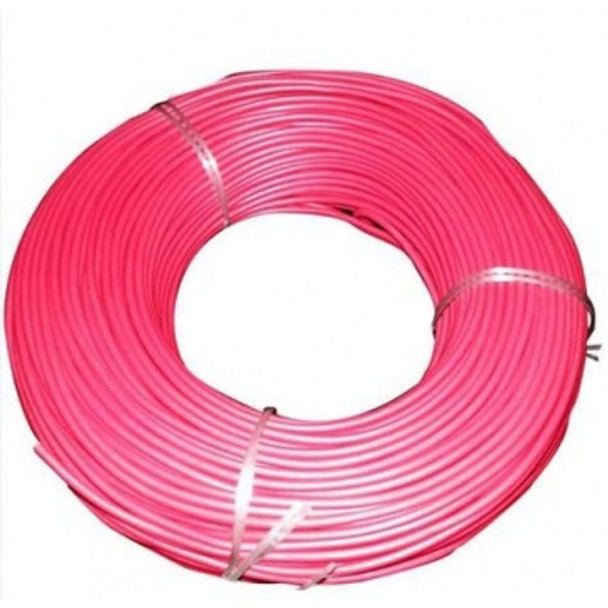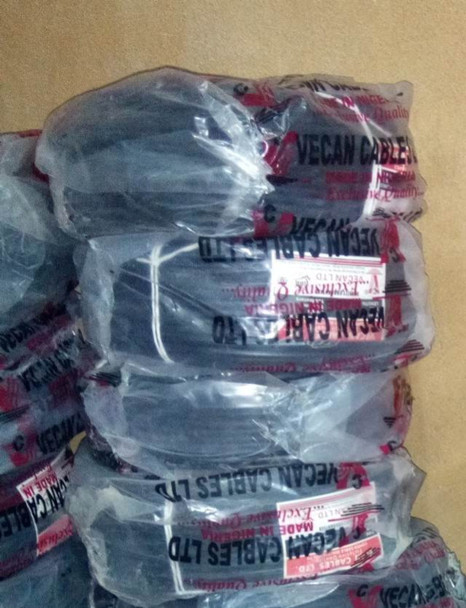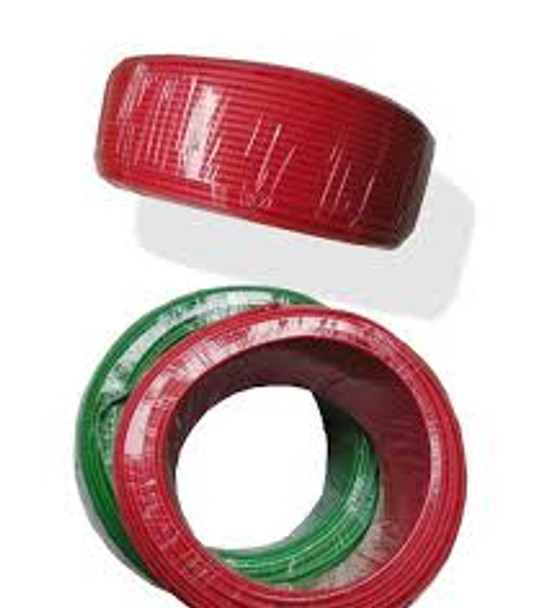Understanding Cable Types: Applications and Uses in Industry
Key Takeaway
- Different cable types serve various industrial applications, including power transmission, data communication, and control systems.
- Power cables are used for transmitting electrical energy in high-voltage environments, like factories and power plants.
- Data cables such as fiber optic and Ethernet cables are essential for reliable communication in IT networks and automation systems.
- Control cables are designed to carry control signals in machinery and industrial automation, ensuring precise operations and system management.
Introduction
Cables are the backbone of many industrial operations, providing the essential pathways for power, control signals, and data transmission. From large manufacturing plants to small-scale automation processes, cables ensure that systems work seamlessly.
Understanding the various cable types used in industry is essential for ensuring proper functionality and safety across different applications. Power cables, for instance, are crucial for transmitting electrical energy in high-voltage environments like factories, power plants, and industrial machinery. These cables are designed to handle heavy electrical loads efficiently.
Data cables, such as fiber optic and Ethernet cables, are integral to modern IT networks and automation systems, facilitating fast and reliable communication between devices. Control cables, on the other hand, are specialized for carrying control signals in industrial automation and machinery, ensuring accurate and reliable operation. Selecting the right type of cable is critical to maintaining system performance and safety across industrial environments.
The purpose of this article is to give an in-depth understanding of the types of cables used across industries, their structures, and specific applications, helping industry professionals make informed choices when selecting cables for their needs.
Cutix Electrical Cable 6mm Single Core
Basic Cable Types and Their Structures
Cables vary significantly in terms of their components, structure, and function. Understanding the fundamental makeup of a cable is the first step to comprehending its uses.
Common Cable Components:
1. Conductors: Typically made from copper or aluminum, conductors carry the electric current or signal.
2. Insulation: Insulates the conductors, preventing short circuits and ensuring safety.
3. Shielding: Reduces electromagnetic interference (EMI) and protects the signal integrity.
4. Jacketing: The outer layer that protects the cable from physical damage, environmental factors, and chemicals.
The types of cables are often categorized based on their applications:
1. Power Cables
2. Control Cables
3. Data/Communication Cables
4. Instrumentation Cables
Cables can also be differentiated based on their structure:
1. Single-core cables: Contain one conductor and are mainly used for simple, low-power applications.
2. Multi-core cables: Have multiple conductors and are used for more complex setups that require multiple connections.
1. Power Cables
Power cables are essential for transmitting electrical power within industrial setups. They can be categorized into high voltage and low voltage cables depending on the application requirements.
1. High Voltage Cables: Designed for long-distance power transmission in industries like energy and utilities. They are often used to connect power stations, transformers, and large equipment.
2. Low Voltage Cables: Used for distributing power to machines and equipment within factories or manufacturing units.
Applications of Power Cables:
1. Electrical power distribution within manufacturing plants.
2. Connecting heavy-duty machinery, transformers, and other power equipment.
3. Integrating distribution boards for centralized control of power systems.
Subcategories:
1. Armored vs. Unarmored Power Cables: Armored cables have additional layers of protection, making them suitable for underground or outdoor installations. Unarmored cables are used where external protection is not necessary.
2. Flexible vs. Rigid Power Cables: Flexible cables are used for applications where movement is involved, such as robotics, while rigid cables are used for stationary power systems.
Vecan Cable - 1.5mm Single Core (copper)
2. Control Cables
Control cables are designed specifically to carry control signals and transmit information to various systems and equipment in industrial environments. They are critical for automation and control applications, ensuring that processes operate smoothly and efficiently.
Applications of Control Cables:
1. Automation systems in industries like automotive, manufacturing, and packaging.
2. Elevator systems, conveyor belts, and other material handling equipment.
3. HVAC systems for climate control in large facilities.
Types of Control Cables:
1. PVC vs. XLPE Insulation: PVC-insulated cables are suitable for general use, while XLPE-insulated cables provide better heat resistance and electrical performance.
2. Flame Retardant and Fire-Resistant Control Cables: These are used in environments where safety and compliance with fire regulations are crucial.
3. Data/Communication Cables
Data/communication cables are vital for transmitting information across industrial networks, linking devices, machinery, and monitoring systems. They are designed to handle different types of signals, ensuring efficient and reliable communication within industrial processes.
Applications of Data/Communication Cables:
1. Networking: Ethernet cables are commonly used in local area network (LAN) setups for data transmission between computers, servers, and control systems.
2. Telecommunications: Linking communication devices and systems, such as PBX systems or intercoms, within industrial facilities.
Types of Data/Communication Cables:
1. Coaxial Cables: Used for radio frequency (RF) signals and commonly found in CCTV systems and broadcasting equipment.
2. Twisted Pair Cables (e.g., Cat5e, Cat6, Cat7): These cables are widely used for Ethernet connections, providing reliable data transfer in LANs.
3. Fiber Optic Cables: Ideal for high-speed data transmission and long-distance communication. Fiber optics are increasingly popular in industries due to their high bandwidth and immunity to electromagnetic interference.
Cutix Electrical Cables and Wire 1.5mm
4. Instrumentation Cables
Instrumentation cables are designed for transmitting control signals and monitoring data in various industrial applications. These cables are essential for ensuring the accuracy and reliability of measurement and control systems.
Applications of Instrumentation Cables:
1. Used in industrial control and monitoring systems, including temperature, pressure, and flow measurement devices.
2. Essential in process automation sectors, such as oil and gas, chemical plants, and pharmaceuticals.
3. Ideal for connecting sensors, transmitters, and control devices, ensuring the seamless flow of information throughout a system.
Features of Instrumentation Cables:
1. Shielded vs. Unshielded: Shielded cables have an additional protective layer that helps to reduce electromagnetic interference (EMI), making them suitable for environments with heavy machinery or electrical noise. Unshielded cables are used in less demanding environments.
2. Protection Against EMI: Instrumentation cables are specifically designed to provide resistance against EMI, ensuring accurate signal transmission even in challenging conditions.
5. Specialty Cables
Specialty cables are tailored for unique applications and environments, often requiring specific features to meet industry standards. These cables are engineered to withstand extreme conditions or specialized use cases.
Overview of Specialty Cables:
1. Flexible Cables: Used in robotics and equipment that undergoes frequent movement. They are designed to be bendable and resilient.
2. Marine Cables: Specifically designed for underwater and offshore applications, these cables are built to resist saltwater corrosion and withstand harsh marine environments.
3. High-Temperature Cables: Suitable for extreme heat environments like foundries, power plants, and furnace operations, these cables can handle elevated temperatures without degrading.
Industry-Specific Cables:
1. Mining Cables: Rugged and designed for heavy-duty usage, these cables can endure harsh conditions such as abrasion and exposure to chemicals.
2. Oil and Gas Cables: Resistant to chemicals and harsh environments, these cables are essential for safe operation in oil and gas extraction and refining.
Cutix 2.5mm single core copper wire
Cable Selection Criteria for Industries
Choosing the right cable for a specific application is crucial for ensuring safety and performance. Here are some key factors to consider when selecting cables:
1. Voltage and Current Requirements: Understanding the voltage and current load is essential for choosing the appropriate cable type and gauge.
2. Environmental Conditions: Consider factors such as temperature, moisture, chemicals, and UV exposure that may affect cable performance.
3. Flexibility and Durability Needs: Determine whether the application requires flexible cables (for moving parts) or rugged cables (for fixed installations).
4. Safety Standards and Regulations: Ensure compliance with industry-specific safety standards to protect personnel and equipment.
Selecting the right cable type for specific applications enhances performance, safety, and reliability in industrial operations.
Advancements in Cable Technology
The cable industry continually evolves, with innovations leading to improved performance and new capabilities:
1. New Developments in Cable Materials: The use of halogen-free and fire-resistant materials promotes safety and environmental sustainability in cable production.
2. Intelligent Cables: The integration of IoT technology allows for real-time monitoring and diagnostics of cable performance, helping to predict maintenance needs.
3. Sustainable Cable Solutions: The shift towards environmentally friendly materials and production processes is gaining traction as industries become more eco-conscious.
Common Challenges and Maintenance Tips
While cables are critical for industrial operations, they can face challenges that may affect performance. Here are some common issues and maintenance tips:
Challenges:
1. Environmental stressors such as temperature fluctuations, moisture, and physical damage can degrade cable performance over time.
2. Electrical interference can disrupt data transmission, leading to performance issues.
Maintenance Tips:
1. Regularly inspect cables for signs of wear, damage, or deterioration.
2. Properly store and handle cables to prevent physical damage.
3. Conduct periodic testing to ensure cables meet performance standards and safety regulations.
Nigerchine Single core copper wire 16mm
Frequently Asked Questions
1. What is the main difference between power cables and control cables?
Power cables are primarily used for transmitting electrical energy, while control cables are designed to carry control signals and data for monitoring and automation systems.
2. How do I choose the right cable for my application?
Consider factors such as voltage and current requirements, environmental conditions, flexibility, durability needs, and compliance with safety standards when selecting a cable.
3. What are the advantages of using fiber optic cables?
Fiber optic cables offer high-speed data transmission, greater bandwidth, immunity to electromagnetic interference, and the ability to cover long distances without signal loss.
4. Why is cable shielding important?
Shielding protects cables from electromagnetic interference (EMI), ensuring that data integrity is maintained and minimizing the risk of signal loss or distortion.
5. How often should I inspect industrial cables?
Regular inspections should be conducted at least annually, or more frequently in high-stress environments. Look for signs of wear, damage, or degradation to ensure safety and reliability.
Related Article
The Ultimate Guide to Choosing the Best Electrical Wire for Your Projects in Nigeria 2024
Which electric cable is best for house wiring
Conclusion
Understanding the various types of cables and their specific applications is essential for industries looking to optimize their operations. Cables are not just passive conduits; they are vital components that facilitate the transmission of power, control signals, and data, ensuring that systems operate efficiently and safely. Proper cable selection based on application requirements, environmental conditions, and compliance with safety standards is crucial for maintaining reliable operations. As cable technology advances, industries must stay informed about the latest developments to enhance performance and sustainability.
For all your cable needs and to explore a wide range of industrial supplies, visit GZ Industrial Supplies. Whether you're looking for power cables, control cables, or specialized cables, we have the solutions to meet your requirements. Get in touch with us today for expert advice and high-quality products tailored to your industry!
Recent Posts
-
Agricultural Sprayer and its uses
Introduction Agricultural sprayers are a special type of farm equipment used for applying liquid sub …Apr 25, 2025 -
Why Serious Mechanics Are Switching to Japanese-Made Shinano Air Tools
Japanese-Made Shinano Air Tools Key takeaway: Shinano’s tight-tolerance, twin-hammer designs d …Apr 24, 2025 -
Top 10 Hand Tool Brands for Professionals
Introduction When it comes to professional hand tools, quality, durability, and reliability are para …Apr 23, 2025











